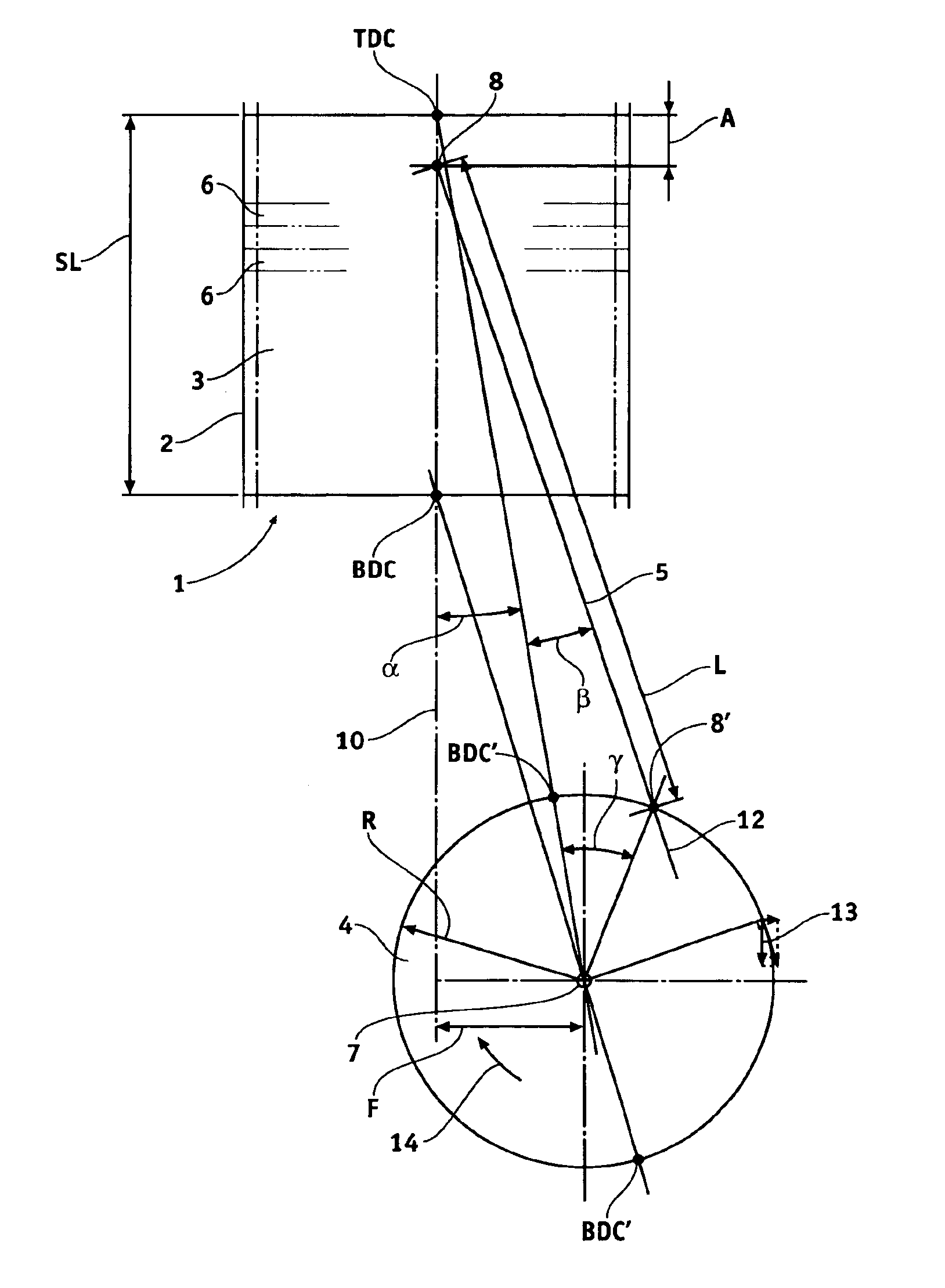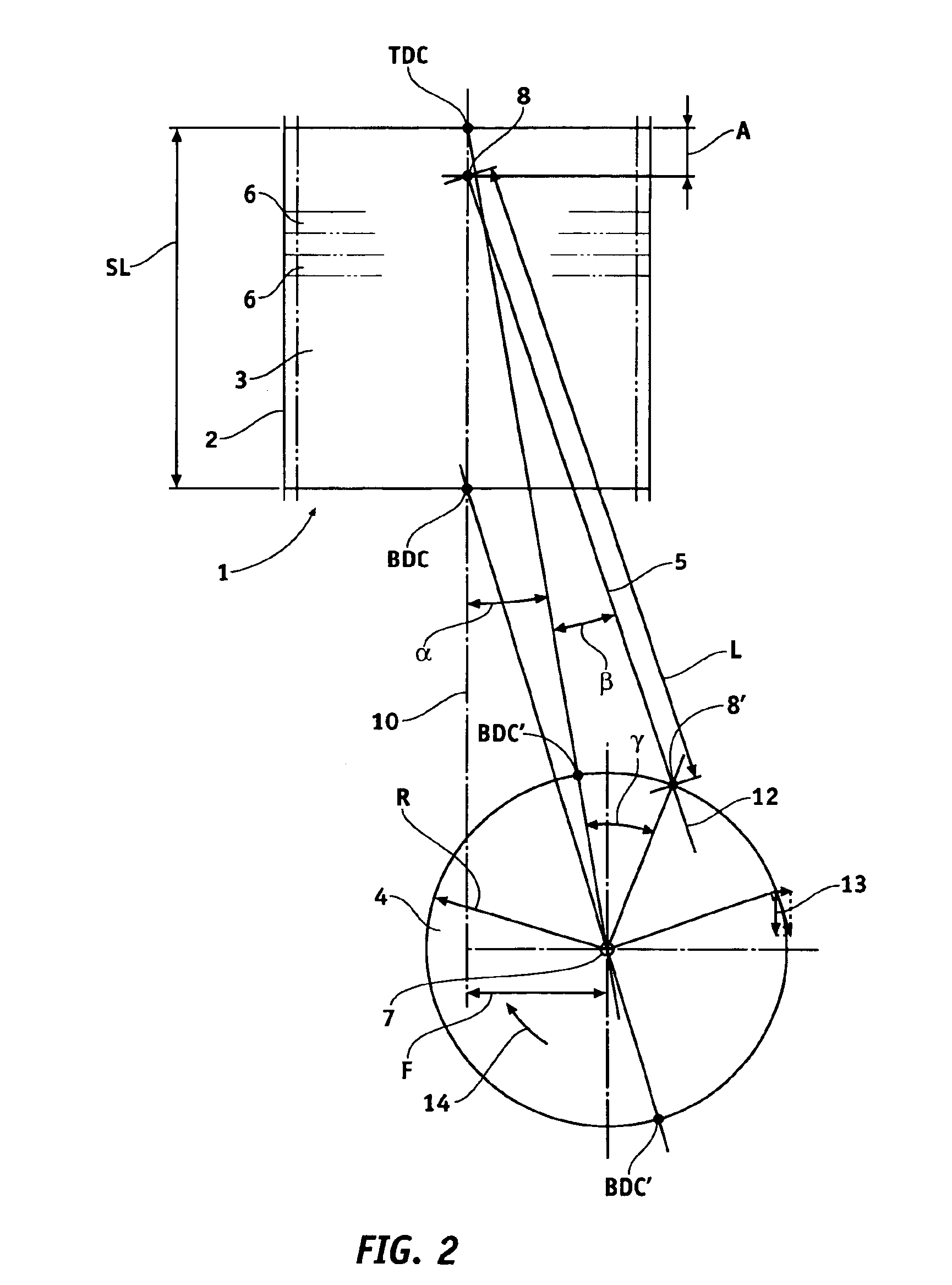Device for converting a linear movement into a rotary movement
a technology of rotary movement and linear movement, which is applied in the direction of connecting rods, bearings, belts/chains/gearrings, etc., can solve the problem of difficult to provide a favourable transmission of force from the piston to the crankshaft, and achieve the effect of favourable transmission of for
- Summary
- Abstract
- Description
- Claims
- Application Information
AI Technical Summary
Benefits of technology
Problems solved by technology
Method used
Image
Examples
Embodiment Construction
ed into a rotation movement of a crankshaft via a connecting rod,
[0020]FIG. 2 is a schematical view in accordance with FIG. 1, the centre rotation of the crankshaft being displaced in relation to the movement line of the piston,
[0021]FIG. 3 is a schematical view in accordance with FIG. 2, the relation between the length of the connecting rod and the stroke length being less than 1.5, and
[0022]FIG. 4 is a table of piston movement in relation to rotation of the crankshaft.
DETAILED DESCRIPTION OF PREFERRED EMBODIMENTS OF THE INVENTION
[0023]In FIG. 1 a piston-cylinder mechanism 1 having a cylinder 2 and a piston 3 movably arranged in the cylinder 2 for rectilinear movement, a crankshaft 4 for rotary movement and a connecting rod 5 connecting the piston 3 and the crankshaft 4 are schematically illustrated. The piston 3 which is suitably gas-sealed by piston rings 6 and runs in the cylinder 2 is arranged for repeated movement backwards and forwards between two extreme positions called upp...
PUM
 Login to view more
Login to view more Abstract
Description
Claims
Application Information
 Login to view more
Login to view more - R&D Engineer
- R&D Manager
- IP Professional
- Industry Leading Data Capabilities
- Powerful AI technology
- Patent DNA Extraction
Browse by: Latest US Patents, China's latest patents, Technical Efficacy Thesaurus, Application Domain, Technology Topic.
© 2024 PatSnap. All rights reserved.Legal|Privacy policy|Modern Slavery Act Transparency Statement|Sitemap



